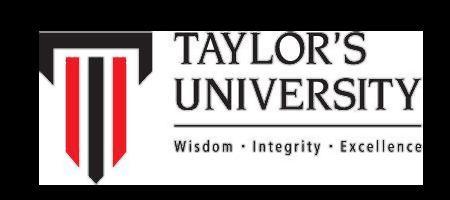
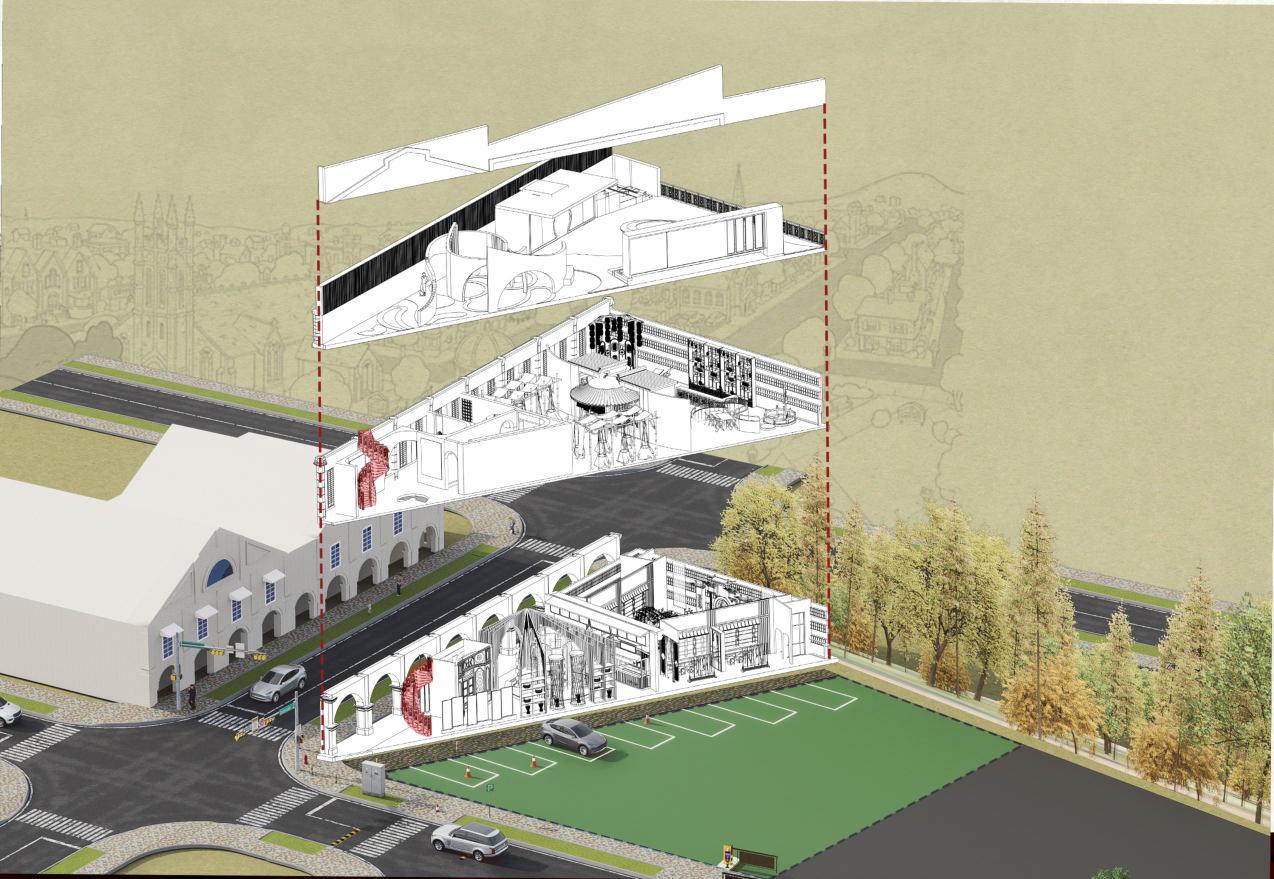



ASSIGNMENT 1: ASSIGNMENT 1: ASSIGNMENT 2: ASSIGNMENT 2:
LEGISLATIVE AND REGULATIVE LEGISLATIVE AND REGULATIVE
KNOWLEDGE EXCHANGE FORUM KNOWLEDGE EXCHANGE FORUM
DIMENSION OF INTERIOR DESIGN
DIMENSION OF INTERIOR DESIGN
GROUP PRESENTATION SPREADSHEET
GROUP VIDEO SCREENSHOT REFLECTION
ASSIGNMENT 3: ASSIGNMENT 3:
FUTURE PRACTICES FUTURE
SEPTEMBER 2024 – JANUARY 2025 FORUM SUMMARY PDW SUMMARY
ASSIGNMENT 4: ASSIGNMENT 4:
BY-LAW APPLICATION AND APPLICATION AND PREREQUISITES FOR BUILDING FOR PLAN SUBMISSION PLAN SUBMISSION
5 5 6 6
ISSUU LINK ISSUU LINK
GROUP PRESENTATION SPREADSHEET
GROUP VIDEO SEREESHOTS REFLECTION
INDIVIDUAL PRESENTATION SPREADSHEET PROGRESSION
CONCLUSION CONCLUSION
SEPTEMBER 2024 – JANUARY 2025

As a future Graduate Interior Designer, students must possess a broad vocabulary and understanding of contractual, professional, and legislative terms. Each group is required to look into one key topic and conduct an in-depth study to gain an adequate understanding how each term applies to the practice. Students will synthesize the Uniform Building by Laws 1984 and other relevant regulations related to provisions for interior (and some exterior) spaces.













video link : https://www.youtube.com/watch?v=PGq9PKHvMKI
SEPTEMBER 2024 – JANUARY 2025
Completing this task has significantly enhanced my comprehension of the various contracts, professional terms, and legislative requirements associated with interior design practices. Our team was tasked with exploring active fire safety, which necessitated a thorough analysis of the Uniform Building By-Laws 1984 and associated regulations. We discussed strategies for incorporating active fire safety measures, such as fire alarms, sprinklers, smoke detectors, and fire extinguishers, to guarantee that interior spaces adhere to safety standards. This experience has not only refined my skills in interpreting and synthesizing intricate regulatory documents but has also provided me with practical insights into how these regulations are implemented in real-world design projects. I have come to appreciate the vital role that active fire safety plays in safeguarding occupants and maintaining the functionality of spaces during emergencies. Furthermore, this endeavor has made it abundantly clear to me that fire safety should be a priority consideration during the early stages of design to meet industry standards and avoid costly modifications later on. By focusing on active fire safety, I have gained a better understanding of how to address compliance issues in other projects and how to design with both safety and usability in mind. In conclusion, this task has been immensely beneficial in preparing me for my future endeavors in the field of interior design.
SEPTEMBER 2024 – JANUARY 2025

This task is to encourage more democratic exchanges whereby in the online forum, each student has a voice that will be heard by anyone who chooses to read his or her comments. Students will experience personal and academic gains as result of their communication with their peers. The goal is for the students to gain professional interchange, and seek out ideas among their colleagues through electronic communication to facilitate the process.




Abstract:
With the rise of unregistered firms offering architectural and interior design services through social media in Malaysia, professionals face growing challenges. These firms often undercut registered companies, utilizing unlicensed designers and architects, creating risks for clients and undermining industry standards. At the same time, rapid advancements in technology, including AI, are threatening to replace traditional roles in design.
How can the architectural and interior design professions navigate these twin threats—illegal practices and automation—while ensuring they remain relevant, innovative, and in demand? What strategies can be employed to maintain professional integrity, embrace technology, and ensure sustainable growth in a shifting landscape? Discuss.


MIND

Abstract:
A Completion and Compliance Certificate (CCC) is an essential legal document issued by the local authorities in Malaysia. It signifies that a building project has been completed according to approved plans and complies with Malaysian building codes, regulations, and safety standards. In Malaysia, it is mandatory to obtain a CCC before a property can be legally occupied. CCC confirms that a building is safe for occupation, emphasizing public safety. It also highlights the complexities and diligence involved in the application process, underlining the importance of transparency, adherence to regulations, and cooperation between developers and local authorities to ensure that structures meet the highest standards of safety and compliance. These processes are often time-consuming, requiring significant administrative work and adherence to strict guidelines. In many cases, project timelines are short, placing additional pressure on architects and developers to meet the requirements within limited timeframes. This situation makes it difficult for professionals to focus on creating highquality designs, as a large portion of their efforts are devoted to navigating




Abstract:
Building designs comply with Malaysia's Uniform Building By-Law (UBBL) 1984, combining both passive and active fire protection systems for comprehensive safety measures. Can UBBL guidelines be further improved to address emerging challenges and advancements in fire safety? What recommendations would you propose for improving the effectiveness of UBBL guidelines in ensuring fire safety in buildings but not limiting architectural design and innovation? (Make references to UBBL when giving your opinion.)
We must have adequate knowledge of Fire requirements for the spaces we design. Discuss in detail why Fire Safety is important for Interior Designers, and not only Architects. Discuss.
MIND MAP




(11th – 15th November 2024)
SEMINAR 1:
SEMINAR 2:
BY MANDARIN ORIENTAL DOHA, QATAR. "THRIVING IN A GLOBAL CAREER: ESSENTIAL SKILLS FOR FUTURE GLOBAL WORKERS” BY RDS PARTNERSHIP. "TRANSACTIONAL LAW PRACTICE"
SEMINAR 3:
BY CULT CREATIVE. "CHALLENGES AND OPPORTUNITIES IN THE DESIGN INDUSTRY”
SEMINAR 4:
BY PEMBINAAN TUJU SETIA. "CAREER PATHWAYS OF QUANTITY SURVEYORS IN THE CONSTRUCTION INDUSTRY: EMERGING ROLES AND EVOLVING RESPONSIBILITIES"
SEMINAR 5: BY IJOHNNY CHIU / SUZY SULAIMAN. SUPPORT LOCAL DESIGN
Date: 12th Nov’24, Tuesday
Time: 5.00 pm - 6.00 pm
TOPIC : "Thriving in a Global Career: Essential Skills for Future Global Workers”
INTRODUCTION
This lecture focuses on the workplace culture in the Middle East, exploring topics such as employee care, global work experience, skill development, and workplace diversity. Through case studies, it demonstrates how a multicultural background can promote personal and professional growth, enhance cross-cultural communication skills. Additionally, it emphasizes the importance of courage, adaptability, and teamwork, as well as strategies for addressing racism and fostering unity. The goal is to build an inclusive, harmonious, and efficient work


SEMINAR 1
TOPIC :
Date: 12th Nov’24, Tuesday
Time: 5.00 pm - 6.00 pm
"Thriving in a Global Career: Essential Skills for Future Global Workers”




TOPIC : "Transactional
Date: 13th Nov’24, Wednesday
Time: 10.00 am - 11.30 am
The lecture delves into the practice of transactional law, clearly distinguishing it from litigation by highlighting its unique focus. It provides comprehensive coverage of the essence, scope, and core skills required for transactional law, along with an in-depth look at the processes involved, the challenges faced, and the path to career development. The emphasis is on non-litigious legal matters, including business transactions, contracts, mergers, and acquisitions, which demand exceptional negotiation skills and keen legal insight to effectively support clients in achieving their business objectives.
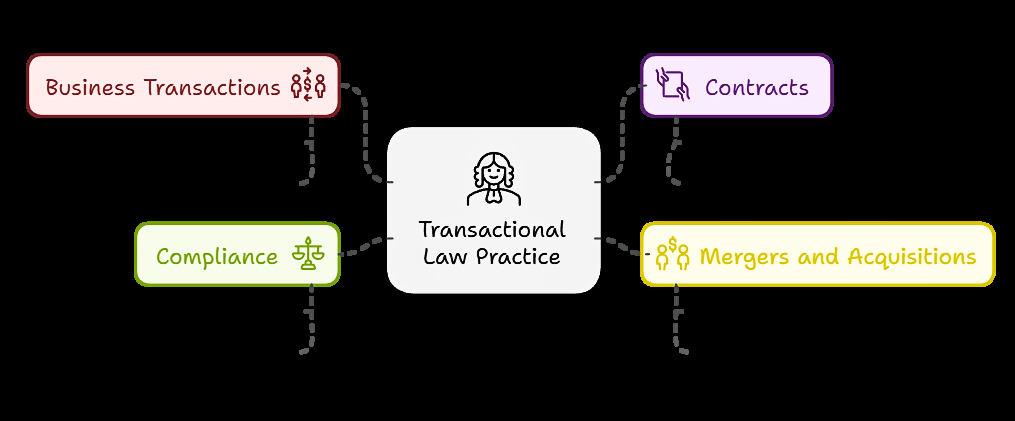

TOPIC :
"Transactional Law Practice"



Date: 13th Nov’24, Wednesday
Time: 10.00 am - 11.30 am
TOPIC :
"Challenges and Opportunities in the Design Industry”
INTRODUCTION



Date: 14th Nov’24, Thursday
Time: 11.30 am - 12.30 pm
The lecture delves into the practice of transactional law, clearly distinguishing it from litigation by highlighting its unique focus. It provides comprehensive coverage of the essence, scope, and core skills required for transactional law, along with an in-depth look at the processes involved, the challenges faced, and the path to career development. The emphasis is on non-litigious legal matters, including business transactions, contracts, mergers, and acquisitions, which demand exceptional negotiation skills and keen legal insight to effectively support clients in achieving their business objectives.


TOPIC : "Challenges and Opportunities in the Design Industry”


Date: 14th Nov’24, Thursday
Time: 11.30 am - 12.30 pm

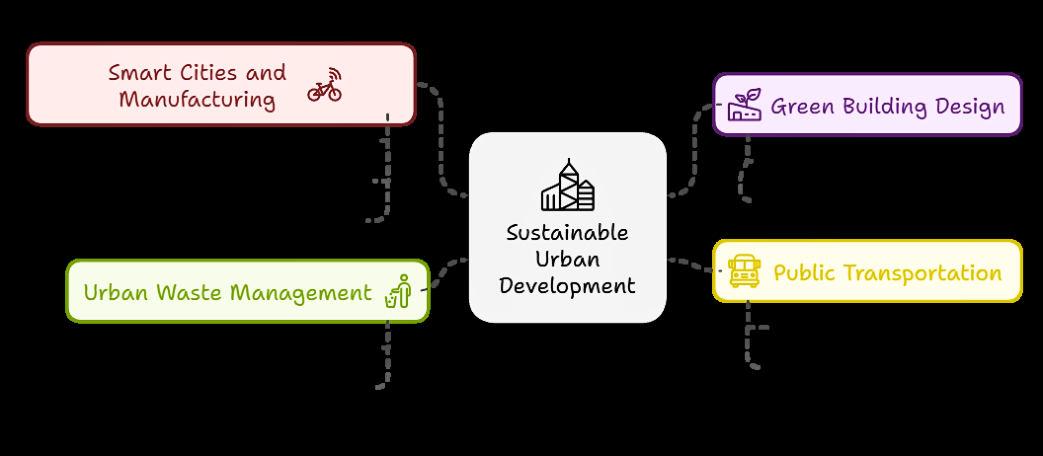

TOPIC :
Date: 15th Nov’24, Thursday
Time: 3.00 pm - 4.00 pm
"Career Pathways of Quantity Surveyors in the Construction Industry: Emerging Roles and Evolving Responsibilities"
The lecture provides an in-depth look at the role and responsibilities of a Quantity Surveyor (QS) through different stages of a project, from inception to final accounts. It covers various activities, including cost appraisals, tender documentation, procurement, financial assessments, and contract advisory. Emphasizing the importance of accuracy, ownership, and accountability in delivering quality work, Lim Gaik Ling reflects on her long experience in managing teams and stresses the value of mentorship and practical learning in the QS field She also highlights the challenges and complexities of managing deadlines, communication, and site meetings, with an emphasis on developing core skills through consultancy and contractor work.


Date: 15th Nov’24, Thursday
Time: 3.00 pm - 4.00 pm
Date: 19th Oct’24, Saturday
Time: 2.00 pm - 4.00 pm
TOPIC :
"Career Pathways of Quantity Surveyors in the Construction Industry: Emerging Roles and Evolving Responsibilities"




TOPIC :
Through practical activities, media campaigns, exhibitions, and community events, design education and public awareness have been effectively enhanced, helping more people recognize the value of local design. By involving community members and collaborating with businesses, local designs have been better integrated into the commercial sector. At the same time, there is a push to blend local design with international trends, creating unique space designs, while international exchange programs and brand storytelling have helped increase the global visibility of local design, driving both cultural and economic development.





SEPTEMBER 2024 – JANUARY 2025
My recent participation in forums and PDW seminars has greatly enhanced my understanding of professional life and industry dynamics. The seminars covered diverse topics, including interpersonal relationships, transaction law, challenges in the design industry, and innovative building materials. The expert speakers provided practical insights, deepening my understanding of critical issues for my future career.
A key takeaway was the emphasis on communication and empathy in professional relationships, which is essential for fostering respect and collaboration. The transaction law sessions provided a foundation for understanding business transactions, which is invaluable for anyone entering the professional world.
The seminars also highlighted the challenges and opportunities in the design industry, offering personal insights from experienced professionals. The discussions on sustainable building materials were particularly enlightening, presenting solutions shaping the construction industry's future.
One of the most rewarding aspects was the democratic exchange of ideas, where every participant had the opportunity to contribute and engage in meaningful discussions. This created a dynamic and collaborative learning environment. Reflecting on this experience, I realize how much it has broadened my perspective. The knowledge I gained has inspired me to seek out new ideas and perspectives and to continue growing professionally. I am eager to apply these lessons in my future endeavors.
SEPTEMBER 2024 – JANUARY 2025


Students are to apply their knowledge in Project 1, relating back to Acts, Rules & By-Laws. This assignment will be a basic working paper for setting up a design practice. Students are required to plan, organize & form their own envision a FUTURE design practice (Sole Proprietor, Partnership, Body Corporate)













video link : https://www.youtube.com/watch?v=PGq9PKHvMKI


WEEK 9-FINAL SUBMISSION
SEPTEMBER 2024 – JANUARY 2025
This assignment has been crucial for my understanding of setting up a design practice. By using knowledge from previous projects and referring to legal documents, I've learned about the requirements for starting a design business.
The process helped me develop strategic thinking and deepened my understanding of industry operations and regulations. It also encouraged creativity and innovation, allowing me to envision a practice that meets professional standards.
I've gained essential skills and a realistic perspective on running a design practice, making me ready for the challenges and opportunities in the professional world. The assignment also let me propose innovative solutions and business models for the architectural industry.
Collaborating with others improved our research and teamwork skills. Learning about effective business practices and the industry's regulatory framework has given me a solid foundation.
Overall, this assignment has prepared me to start my own design business with a clear vision, ethical integrity, and a strategic approach.
SEPTEMBER 2024 – JANUARY 2025

Students are required to apply their knowledge gained in Project 1 & Discussions from Project 2 into their individual thesis projects from AIDP1. Each regulatory, legislative, or technical provisions must be translated into an informative graphical presentation with dimensions, drawings, isometric drawings, and materials where necessary. Students will be.

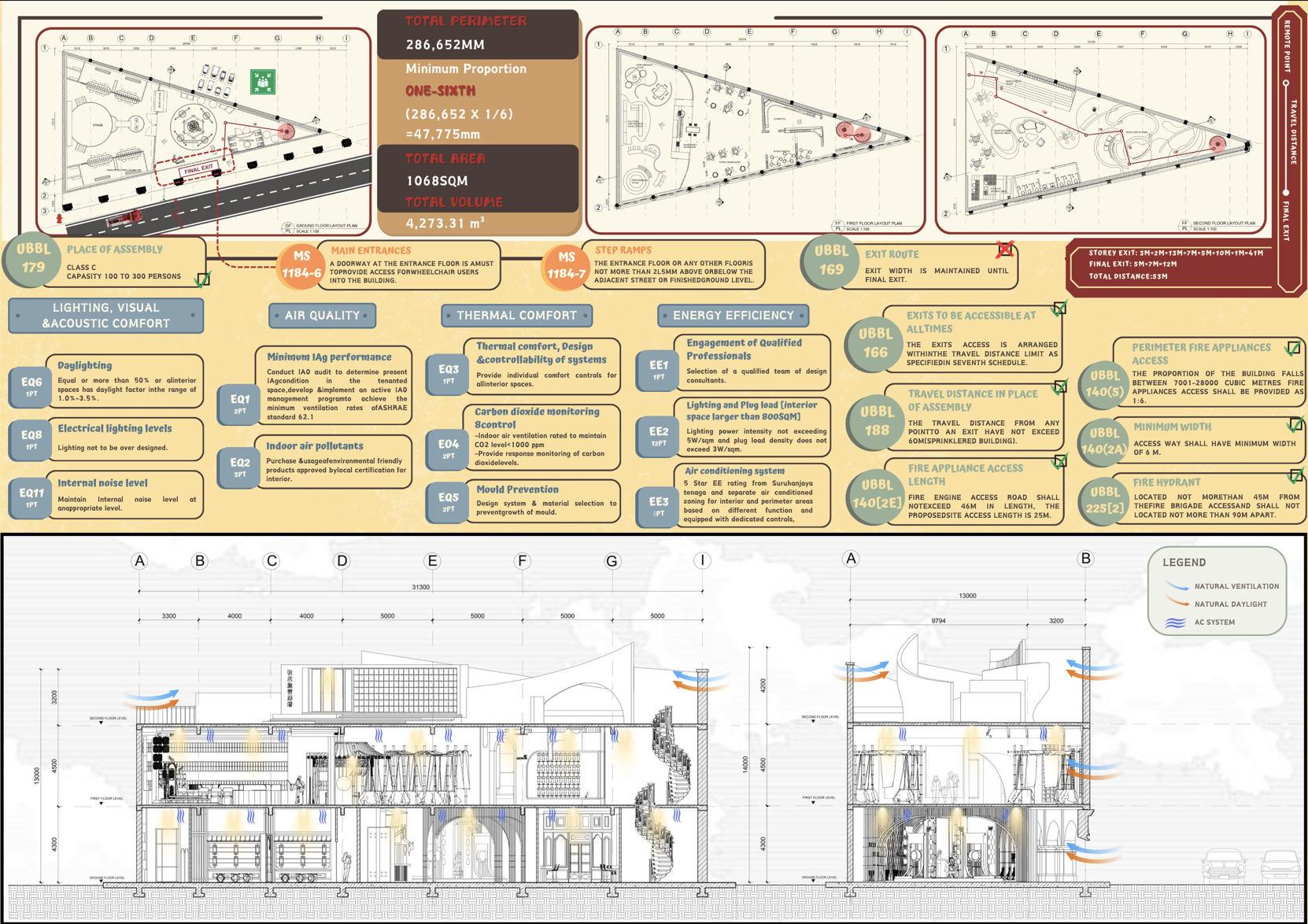



WEEK 10-DRAFT SUBMISSION

WEEK 9-FINAL SUBMISSION
SEPTEMBER 2024 – JANUARY 2025
In the Professional Practice module, my interior design skills improved significantly. Through four key tasks—establishing a design consultancy, adhering to regulations, analyzing industry trends, and understanding legal aspects—I gained comprehensive industry knowledge. The hybrid learning model allowed me to manage my time flexibly and engage with the course content effectively. Ms. Yasmin's guidance was particularly valuable, simplifying complex concepts into an easily digestible structure.
The final assignment deepened my understanding of building regulations and helped me integrate the knowledge from Project 1 into my AlAD2 Project, enhancing my ability to identify and solve problems.
In the final project, I ensured my design complied with the Uniform Building By-Law (UBBL), focusing on requirements for spatial safety, functionality, lighting, ventilation, fire safety, and accessibility. This experience not only strengthened my understanding of regulations but also improved my ability to create compliant and practical designs, significantly advancing my professional capabilities.
SEPTEMBER 2024 – JANUARY 2025
The Professional Practice module significantly enhanced my interior design skills. I gained a clear understanding of how to establish and manage a design business, including business planning, legal compliance, and industry regulations. Studying the Uniform Building By-Law (UBBL) taught me to incorporate fire safety measures, such as alarms, sprinklers, and smoke detectors, ensuring designs meet safety standards.
I learned to balance functionality with compliance, creating practical and sustainable designs. Researching industry trends and innovative materials expanded my knowledge of sustainable practices and strategies for adapting to changes. Collaborative tasks also improved my communication and problem-solving skills, helping me identify and address compliance issues effectively.
Participation in forums and workshops deepened my understanding of industry dynamics, transaction laws, and material innovations. These experiences emphasized the importance of communication and empathy in professional relationships while boosting my confidence in addressing industry challenges. Overall, this module equipped me with comprehensive skills and knowledge to design strategically and meet industry standards, laying a strong foundation for my career.
